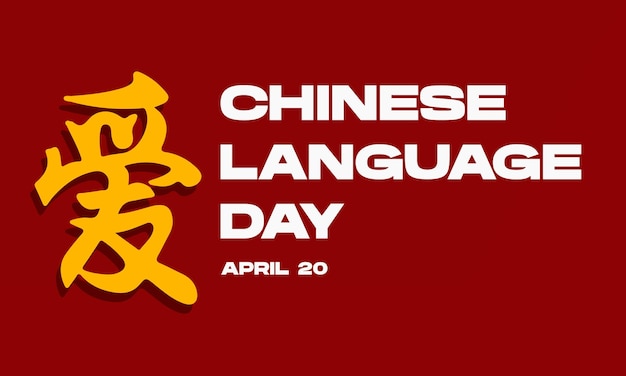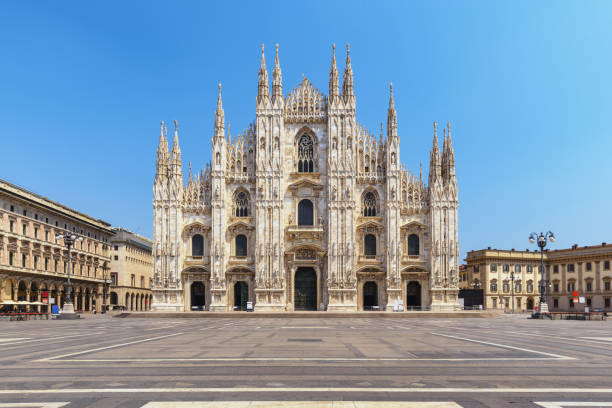UN Chinese Language Day – April 20: A Celebration of Culture, Heritage, and Global Communication
The vast expanse of human civilization has been built upon the foundation of language. Language, more than a means of communication, is a vessel of history, identity, philosophy, and cultural memory. Among the pantheon of human languages, Chinese—specifically Mandarin—is one of the oldest and most influential tongues still in use today. Recognizing this profound legacy, the United Nations designated April 20 as UN Chinese Language Day to honor the contribution of Chinese to the world’s linguistic and cultural tapestry. This day is not just a celebration of a language, but of an entire civilization's philosophical insights, artistic traditions, and the enduring influence of Chinese culture in shaping global narratives.

Origins of UN Chinese Language Day
The United Nations, since its inception in 1945, has recognized the significance of multilingualism. To ensure fairness and promote cultural diversity, the UN conducts its affairs in six official languages: Arabic, Chinese, English, French, Russian, and Spanish. In an effort to celebrate each of these languages and promote equal use within the organization, the UN Department of Public Information (now the Department of Global Communications) established specific days to honor each language. This initiative began in 2010 as part of a broader effort to celebrate cultural diversity and foster interlinguistic dialogue.
Chinese Language Day was officially observed for the first time on November 12, 2010, but in subsequent years, the date was changed to April 20. The reason for this shift was both symbolic and historical. April 20 roughly corresponds with Guyu (谷雨) on the traditional Chinese calendar, the sixth solar term in the ancient East Asian lunisolar calendar. Guyu, which literally means "grain rain," marks the start of warmer weather and abundant rainfall, essential for the spring planting season. It is also intimately linked to the legendary figure Cangjie (仓颉), the mythical inventor of Chinese characters.
Cangjie: The Legendary Creator of Chinese Writing
According to Chinese legend, Cangjie was a minister and historian under the reign of the Yellow Emperor (Huangdi), a mythical ruler from around 2600 BCE. Cangjie is credited with inventing Chinese characters—a monumental step that shifted China from a predominantly oral culture to a literate one. It is said that when Cangjie created the first characters, the heavens rained millet and ghosts wailed in mourning because the mystery of heaven’s secrets had been revealed.
Though these stories are mythological, they highlight the deep reverence the Chinese hold for the written word. The writing system Cangjie is said to have created evolved over millennia into what we now know as Chinese characters (汉字, Hànzì). They are among the oldest continuously used writing systems in the world, with inscriptions dating back over 3,000 years to the Oracle Bone Script of the Shang dynasty.
April 20 is thus not an arbitrary choice but a profound symbol of the birth of written Chinese civilization—a day when the linguistic roots of one of the world’s oldest cultures are honored globally.
Chinese as a Global Language
Mandarin Chinese, or Putonghua (普通话), is the most widely spoken language in the world by number of native speakers. It is the primary language spoken in China, Taiwan, Singapore, and widely understood in Malaysia and other parts of Southeast Asia. As of the 2020s, over 1.3 billion people speak Mandarin Chinese as their first language, and the number continues to grow as Chinese influence spreads globally.
The structure of Chinese is quite distinct from Indo-European languages. It is tonal, monosyllabic, and relies heavily on characters rather than an alphabet. Each character often corresponds to a single syllable and carries semantic meaning. This unique structure has fascinated linguists and language learners for centuries and is one of the many reasons Chinese is considered both challenging and rewarding to learn.
In the context of the UN, the use of Chinese became increasingly important after the People’s Republic of China was recognized in 1971 as the legitimate representative of China to the United Nations. Since then, Chinese has been used in official documents, meetings, and conferences. The need to support Chinese multilingualism also led to significant growth in the number of Chinese translators and interpreters working within the UN system.
Celebrations and Activities
Each year on April 20, the UN Chinese Language Day is marked with a variety of cultural, educational, and artistic events hosted at UN Headquarters in New York, Geneva, Vienna, and other UN offices worldwide. The aim is to raise awareness about the language, encourage its learning, and celebrate Chinese cultural contributions.
Activities often include:
-
Calligraphy workshops, where participants learn how to write Chinese characters using traditional brush and ink techniques.
-
Chinese poetry readings, especially classical poetry from the Tang and Song dynasties.
-
Martial arts demonstrations, including tai chi and kung fu, which highlight the philosophical and physical dimensions of Chinese traditions.
-
Chinese cuisine exhibits, showcasing regional dishes from across China, from Sichuan’s spicy hotpots to the delicate dim sum of Cantonese kitchens.
-
Film screenings, featuring both historical epics and contemporary Chinese cinema to introduce audiences to the evolving Chinese storytelling tradition.
-
Language seminars, providing an introduction to the structure, tones, and syntax of Mandarin Chinese for beginners.
-
Panel discussions with scholars and diplomats about the role of the Chinese language in international relations, diplomacy, and cultural exchange.
These celebrations often attract attendees from diverse cultural backgrounds and offer a window into the richness of Chinese civilization.
The Cultural Significance of the Chinese Language
The Chinese language is more than a system of communication—it is the living archive of one of humanity’s most enduring civilizations. Through its characters, the language encapsulates philosophical systems like Confucianism, Daoism, and Buddhism. Texts such as the Analects of Confucius, the Tao Te Ching, and the Book of Changes (I Ching) continue to inform not only Chinese thinking but global philosophical discourse.
Chinese also carries a vast literary heritage—from the Shi Jing (Book of Songs) to classical novels like Journey to the West, Water Margin, and Dream of the Red Chamber. These works are deeply embedded in the cultural psyche of Chinese-speaking peoples and offer invaluable insights into societal values, family structures, politics, and metaphysics.
Moreover, the aesthetic form of written Chinese—particularly in calligraphy—is an art form in itself. Unlike alphabetic scripts, Chinese characters are visually expressive and ideographic. Each stroke carries meaning, rhythm, and balance. Calligraphy is often seen as a reflection of the calligrapher’s inner world—making the act of writing a philosophical and spiritual practice.
Chinese Language in Modern Context
Today, Chinese is increasingly becoming a language of global commerce, diplomacy, and science. With China emerging as the world’s second-largest economy and a major player on the geopolitical stage, proficiency in Chinese offers strategic advantages. From international business negotiations to scientific collaborations and educational exchanges, knowledge of Chinese opens doors to new opportunities.
Confucius Institutes—named after the ancient philosopher—have been established worldwide to promote the Chinese language and culture. By 2024, there were over 500 Confucius Institutes and 1,000 Confucius Classrooms operating in more than 160 countries. These institutions not only teach the language but also offer cultural programming to foster mutual understanding.
The popularity of learning Chinese has also surged, with millions of students globally enrolled in Mandarin courses. Technological advancements have made Chinese more accessible, with apps, digital dictionaries, and online platforms facilitating remote learning.
Moreover, China’s growing influence in media—through platforms like CGTN, TikTok (Douyin), Weibo, and Chinese cinema—is contributing to the global spread of Mandarin. Chinese pop culture, music (like C-pop), dramas, and animated films are attracting fans worldwide, particularly among younger generations.
Multilingualism and Global Peace
UN Chinese Language Day underscores the United Nations’ broader commitment to multilingualism, which is considered a core value for fostering global peace, understanding, and inclusivity. Multilingualism ensures that no voice is lost in translation and that all member states have equal access to communication and decision-making.
In this spirit, the Chinese language represents more than just China—it represents a commitment to diversity, equity, and the preservation of human heritage. As languages disappear around the world at an alarming rate—often taking entire cultures with them—the UN’s promotion of its official languages serves as a reminder of the urgent need to protect linguistic diversity.
Challenges in Chinese Language Promotion
Despite its global significance, promoting Chinese language on the world stage comes with unique challenges. These include:
-
Complexity: Chinese is widely considered one of the most difficult languages to learn due to its tone system, vast vocabulary, and non-alphabetic script.
-
Digital barriers: While technology aids learning, Chinese digital literacy requires familiarity with pinyin input methods, simplified vs traditional characters, and region-specific platforms.
-
Geopolitical tensions: In some countries, cultural diplomacy initiatives like Confucius Institutes have faced scrutiny over concerns of political influence, which complicates language promotion.
-
Lack of resources: In many parts of the world, particularly in under-resourced educational systems, access to qualified Chinese language teachers and materials is limited.
Nonetheless, the celebration of Chinese Language Day is an important effort to bridge these gaps and emphasize shared humanity over division.
The Future of Chinese Language in the UN and Beyond
Looking ahead, the relevance of Chinese within the UN and the global community will likely increase. As China's role in international peacekeeping, climate negotiations, technological development, and economic cooperation expands, so too will the importance of ensuring robust Chinese-language communication channels.
Simultaneously, Chinese language and culture will continue to shape global art, science, literature, and education. The growing interest in Chinese medicine, philosophy, cuisine, and martial arts points to a rising global appreciation of Chinese heritage beyond language alone.
Conclusion: A Celebration Beyond Words
UN Chinese Language Day is more than a commemoration—it is a reflection of a civilization's resilience, beauty, and timeless wisdom. On April 20, when the grains are nourished by spring rain, we are reminded of the nourishment that language provides to the soul of humanity.
In recognizing and celebrating the Chinese language, the United Nations pays homage not just to its members but to the idea that in understanding each other’s tongues, we better understand each other’s hearts. In every character traced, every tone spoken, and every proverb shared, we find common ground in a world often divided by misunderstanding. On this day, the world speaks a little more Chinese—not just in sound, but in spirit.
Photo from Freepik




